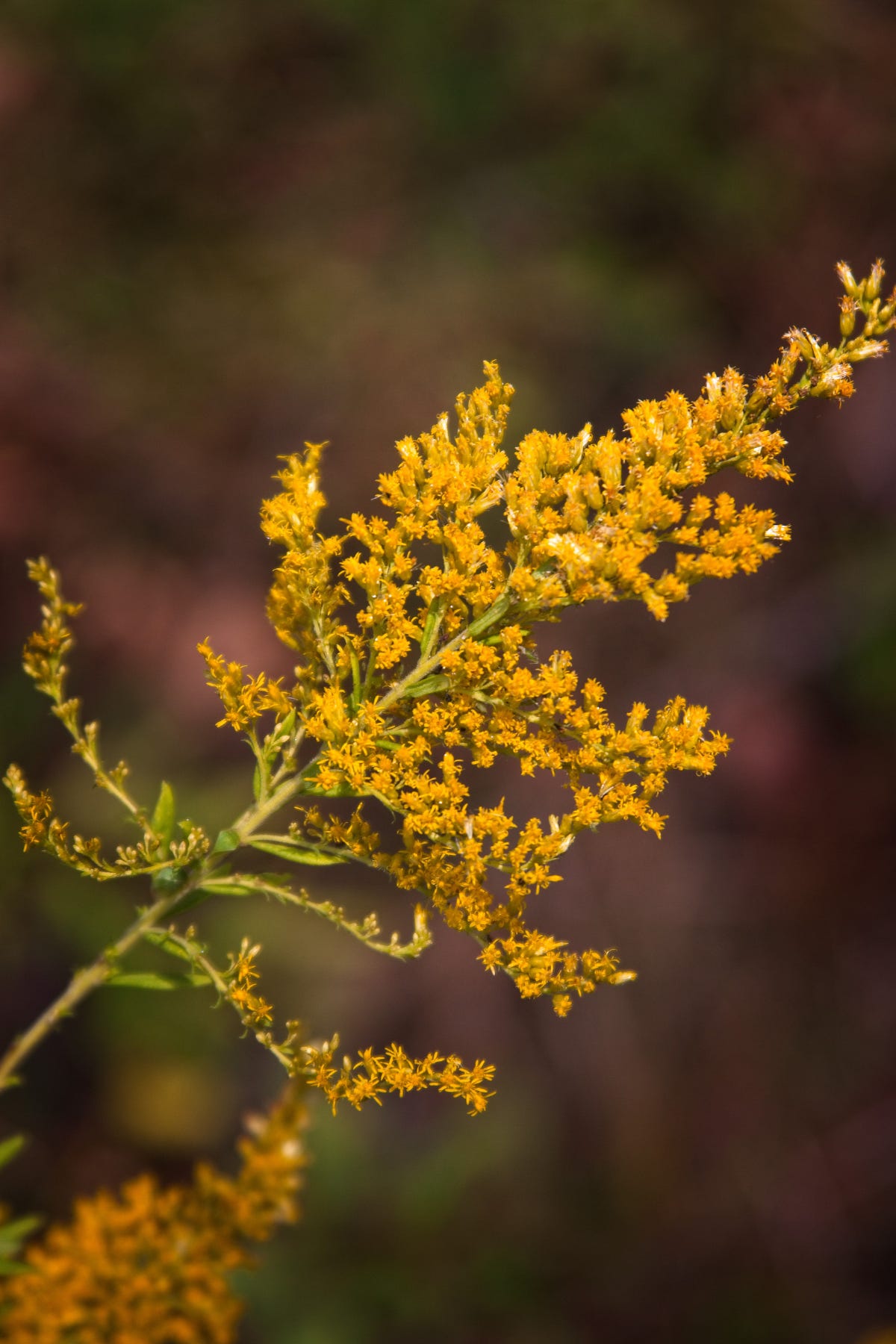At the writing of this letter, blankets of goldenrod are popping up and covering fields, roadsides, and gardens. Goldenrod, in my humble opinion, is one of the tell-tale signs that summer is coming to an end, and fall is about to make its grand debut. It is the plant that, once it begins to bloom, I can almost count down the weeks until the first frost or chilly night. It is one of my favorite wild herbs to forage for, mostly because of its beauty, but also because of its ease to decorate with, and its amazing medicinal purposes.
Once you know what goldenrod looks like, you’ll never forget it. You’ll never confuse it with ragweed or ironweed. Goldenrod is goldenrod—easy to spot, especially when the plant tip begins to slump over before the buds burst open.
Most livestock love goldenrod, but my ruminants especially love the tops. When given the opportunity, our sheep and cows will take off the tops of goldenrod before it blooms. It’s an incredible treat that they go for before anything else in their pasture rotations.
So what’s the hype about goldenrod, other than its beauty? Let’s go over the medicinal uses of this incredible wild herb, and the history of it as well.
Keep reading with a 7-day free trial
Subscribe to Amy K. Fewell | Homesteading for the Kingdom to keep reading this post and get 7 days of free access to the full post archives.





